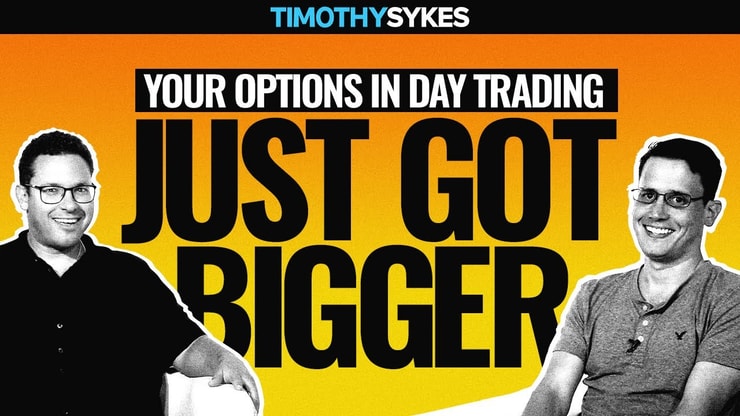Stock options as we know them started trading in 1973. But the concept goes way back, spanning centuries.
You don’t have to know the history of options to trade them. But successful stock traders always seem to know a lot about the market.
Curious about the history of stock option trading? Read on to learn more!
Table of Contents
History of Options

2025 Millionaire Media, LLCOptions go as far back as the fourth century B.C.E. in ancient Greece.
Aristotle wrote about how Thales of Miletus made profits from a larger-than-expected olive harvest. He rented olive presses before harvest time, and then sold the rights to use them.
The term “option” wasn’t used back then. But we can see what Thales did was buy a call option. He was trading rights, not actual olive presses.
Another prototypical options trade was carried out in 17th-century Holland, where tulips were really popular and widely sought after by nobles. Informal exchanges traded contracts with tulips as the underlying security. They had different names for their options contracts, but they were roughly similar to modern calls and puts.
When tulip bulb mania eventually ended, many options contracts went unfulfilled. The options market was unregulated, so no one could force contract fulfillment. Option holders lost their money and their homes. This resulted in options getting a bad reputation all over the world.
Lots of option holders took too many risks back then and didn’t cut their losses quickly enough. Worse still, most of them used money they couldn’t afford to lose…
Remind you of anyone?
EVERY day in the stock market lately is a different kind of trading day and you MUST adapt to the current conditions or else you'll lose like 90% of traders do as they don't prepare, they aren't meticulous, they aren't cautious because they gamble, gunsling & eventually blow up!
— Timothy Sykes (@timothysykes) September 3, 2020
Birth of the US Stock Options Market
19th-century American financier Russell Sage started a new over-the-counter options market. He was the first person to connect option purchase prices, underlying security prices, and interest rates.
Sage’s options market worked by devising synthetic loans. Sage funded these loans by buying shares of stock and a customer’s put option.
This concept allowed him to lend money to options holders at his desired interest rate. He did this by tweaking his contract price and the agreed-upon strike price.
Sage suffered big losses and eventually stopped trading. But his concept endured and played a part in the evolution of options.
The late 19th century also saw put and call brokers rising in popularity. Here’s how it worked:
A trader would contact the broker to buy calls or puts in stock market assets. Then, the broker would find another trader for the other side of the options contract.
This made trading options easier, but the process was still complicated. The option holder and writer still needed to negotiate and agree on every sale.
A case-by-case agreement meant that stock prices and strike prices could vary. Plus, there were still no standards for these types of options trades, so many traders were still wary.
Want to skip to the fun stuff? Read my guide to learning options trading today!
The Emergence of the Listed Options Market
Options had limited regulation and standardization until recent years. This prevented them from being widely adopted. Traders back then didn’t trust options — they didn’t see it as a fair market.
In 1968, the Chicago Board of Trade wanted to find a new way to grow. They came up with the Chicago Board of Options Exchange (CBOE), which started trading in 1973.
This was the first time options were traded in a standardized and fair market. From that point, options grew in popularity.
More Breaking News
- Ondas Holdings: Rising Through The Ranks
- Redfin Boosted by Optimistic Upgrades
- EXPE Shares Plummet: Buying Opportunity or Risky Bet?
Today’s Stock Option Market

2025 Millionaire Media, LLCDespite being a fair market, the CBOE still saw some resistance from traders. They found it hard to determine a fair option price.
Fischer Black and Myron Scholes changed that in 1973 with the Black-Scholes Pricing Model. This model calculated an option’s value, convincing many doubtful traders.
Ever calculated an option’s worth and fair purchase price with its delta? That’s based on the Black-Scholes Pricing Model.
Want to learn more about option delta? Read my article on delta in options trading.
The American options market became more popular with index options in 1983. Since then, more than 1 billion index options contracts have been traded, spanning over 50 different indices.
Modern Stock Options
Now, you can trade options from anywhere.
On average, there are 11 million options traded every day. You have lots of exchanges to trade on, like the NYSE Arca, the International Securities Exchange’s group of exchanges, and the CBOE.
Brokers protect new traders by requiring approval to access the options market. Inexperienced traders are only given access to the lowest-risk strategies.
Robinhood is one of the most popular options brokers — check out my guide about options trading on Robinhood here!
Today, there are multiple types of options on numerous underlying assets. You can trade options for stocks, indices, mutual funds, and more. There are even whole communities set up around trading options, like my former student Mark Croock’s Evolved Trader program.
Here’s a sneak peek of Mark’s curriculum:
It’s easier than ever to start trading options, but it’s also easy to lose money doing it. Trade safe and smart — remember, trading is a marathon, not a sprint.





Leave a reply